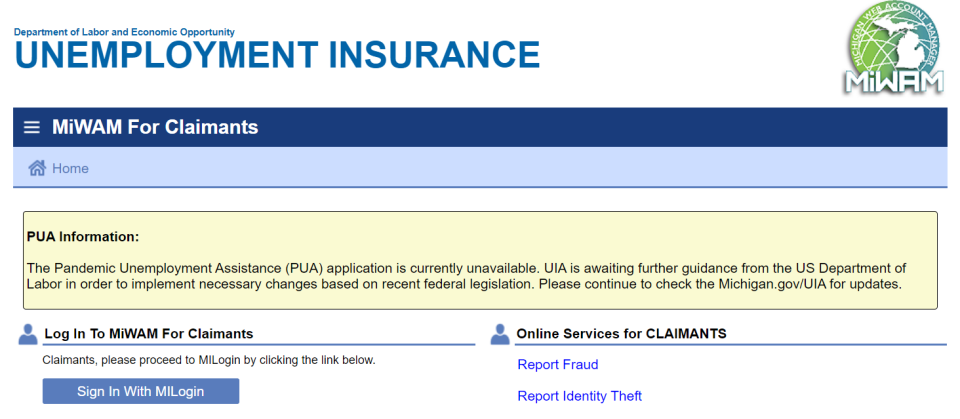Wilson: Despite low jobless rate, Michigan UIA still struggles to meet demand
Like many of my colleagues in journalism, I was laid off for a week in 2022. I filed for unemployment benefits.
That experience with Michigan’s Unemployment Insurance Agency left me worried for the tens of thousands of people who could face unemployment in 2023 if the predicted recession arrives.

Michigan’s seasonally adjusted unemployment rate in February was 4.3%, among the lowest rates since April 2020, when the coronavirus pandemic left more than one in five Michigan residents unemployed.
Nearly three years later, our state’s unemployment system can’t seem to shed its well-publicized problems that officials have repeatedly blamed on high numbers of unemployed people during the pandemic.
The agency’s phone system has the same phone messages warning callers of a system overburdened by throngs of residents not working, despite the fact most of us, in fact, are working.
Unemployment Insurance Agency Director Julia Dale blamed much of the problem on the state’s “antiquated system,” which officials plan to replace in about two years.
“This is the product we are stuck with. It does hamstring us,” she told me, in my capacity as a journalist, about the state’s computer system.
She didn’t have to convince me. My effort to file for benefits did that.
I tried to file for benefits the first day I was laid off, on a Monday, knowing from past experience that failure to file in that first week of a layoff disqualifies a person from getting benefits for that week.
The process of updating my password to get back in a system I last used in 2020 worked great. But I changed employers last year, and the software stopped my claim when it couldn’t discern which employer I was filing a claim against. Call for help, the system said. (Ironically, the same issue happened to a colleague, although he’s worked at the Lansing State Journal for over 20 years and had never heard of the other firm he supposedly worked for.)
I called on Tuesday for help. The phone system informed me call volumes were high but that I could arrange to be called back. By midday Wednesday, no call had arrived.
I called again, determined to stay on the line until I could speak to someone. The system informed me call volumes were high, apologized and hung up.
I called back and made a telephone appointment for Thursday morning. When a representative called, she immediately wanted to begin a “new claim.”
When I explained I had started a claim online but the system asked me to call. Before I could say, “But wait!!!” I was transferred to another area of UIA. A few minutes later, the system dropped the call.
By now I was desperate. Friday was a state holiday and I worried my claim might be void if I couldn’t complete it in the same week I was laid off.
I spent Thursday afternoon calling repeatedly, and at 4:50 p.m. a woman answered the phone. Like the employee from the day before, I could hear the tiredness in her voice, the anticipation I would be another angry customer. I was just glad she answered the phone with only 10 minutes left in her day.
I quickly explained my problem. No big deal, she said, adding it was a common problem and she could finish my claim. She couldn’t have been kinder. I later learned my claim was denied as incomplete.
If we can’t get it right when less than 5% of the workforce — fewer than 200,000 people — are unemployed, what are we going doing to do if that number doubles or triples in a recession?
It seems incredible that a repeat of the fiascos during the early years of the pandemic, some of which have led to legal judgments against the state, could be allowed to be repeated.
Dale is the latest in a long list of UIA directors, 11 in the 11 years prior to her taking the lead in October 2021.
She seems engaged and determined to fix the system and didn’t hold back in discussing the challenges.
One of the things the system does well, Dale said, is that it records the keystrokes of claimants. While she doesn’t have access to claims, she said she asked staff to review mine. She said she could see where the system stopped my claim because of the confusion over employers.
That technology is helping the agency set up the new computer system, as well as review current claims, she said.
“When we do our own internal audits, we can check what employees are doing, what accounts did they access?” Dale said.
The agency has also hired Detroit-based nonprofit Civilla to simplify its communications and build what she called “road maps” to make it easier for customers to navigate the current system.
“Until we get out of this system, we’ve got additional materials there” to help customers, she said.
The agency is also working with Civilla to revise its correspondence with customers to make it easier to understand, she said.
Staffing challenges are “a daily balancing act,” Dale said, pointing out that the late fall and winter months are a peak unemployment time for Michigan and that the agency, like many employers, is dealing with constant turnover.
I was lucky. I successfully appealed the denial of benefits and was paid. I also have a profession that has taught me good problem-solving and computer skills. Not everyone is so lucky.
Waiting two years for any measurable improvements to the UIA system, as the economy teeters, seems like a hell of gamble for Michigan.

Al Wilson is senior news editor of the Lansing State Journal.
This article originally appeared on Lansing State Journal: Michigan's unemployment system struggles despite low jobless rate

